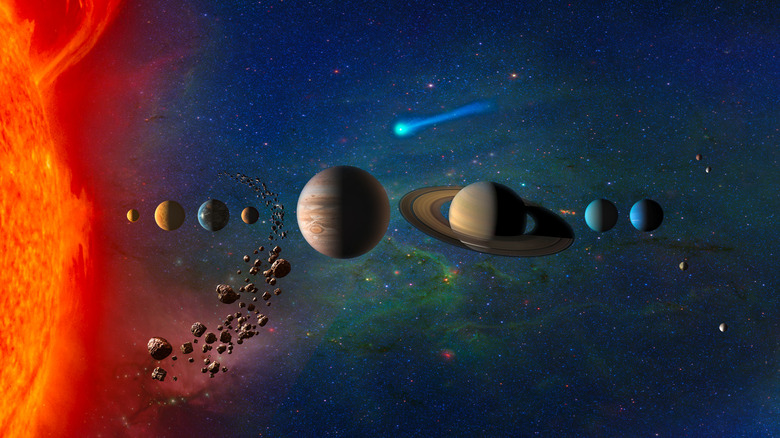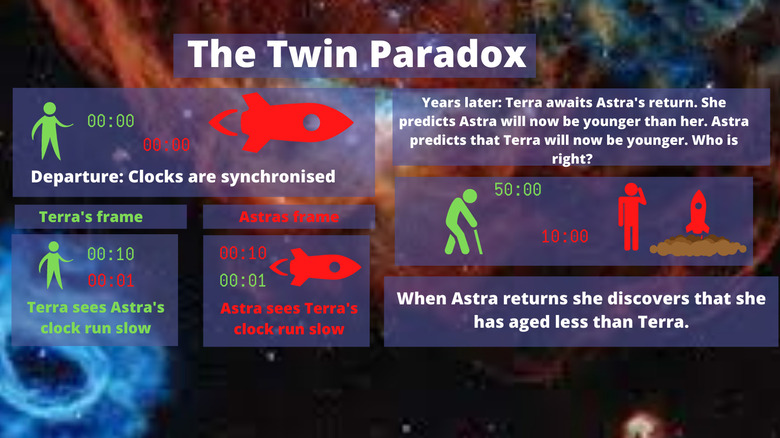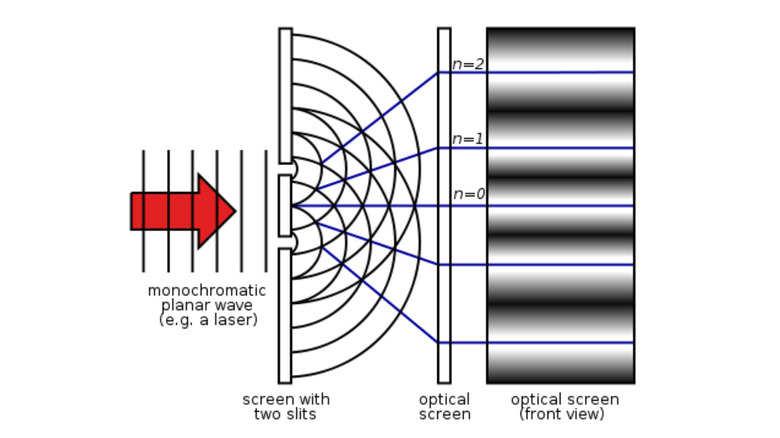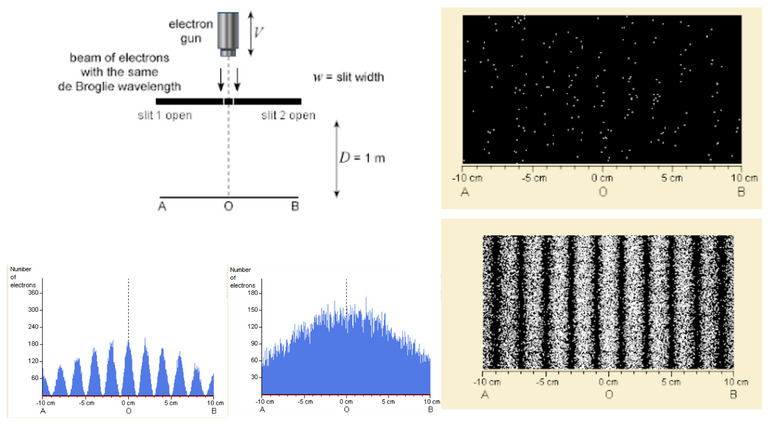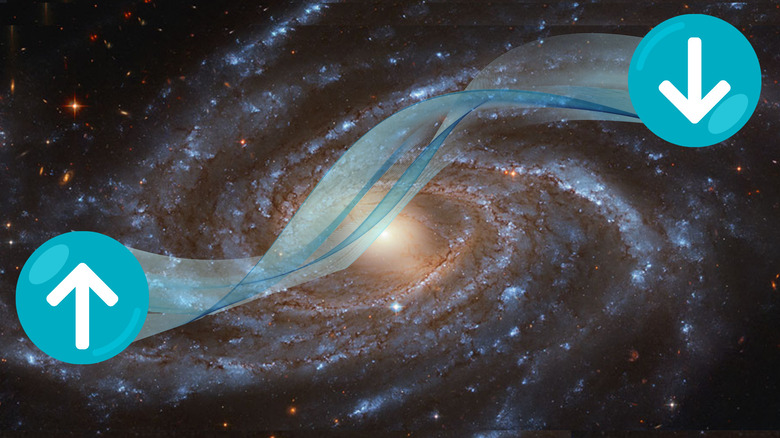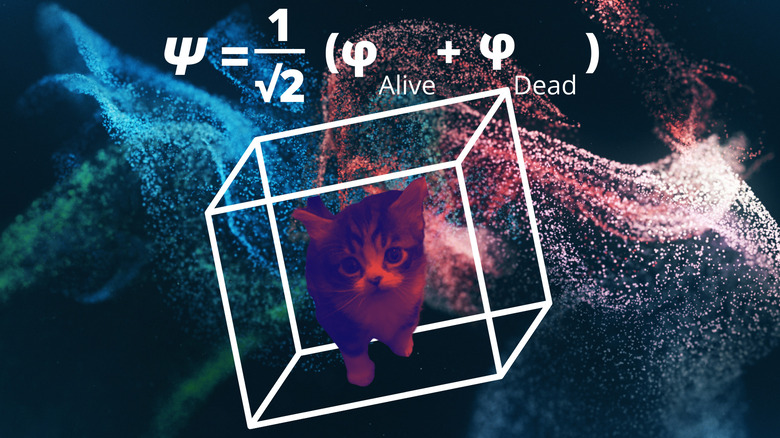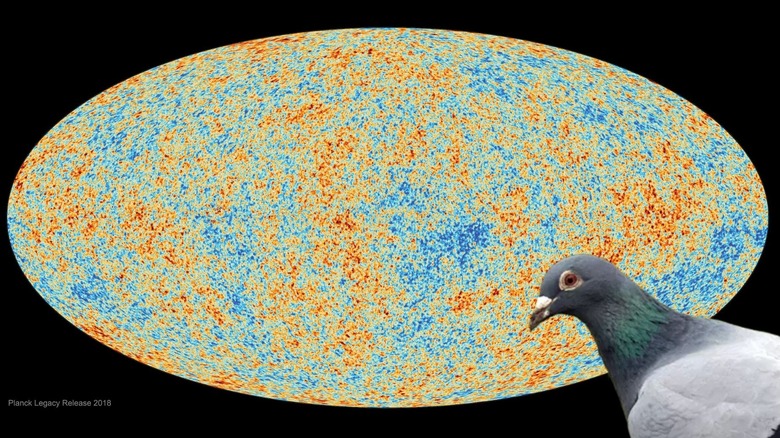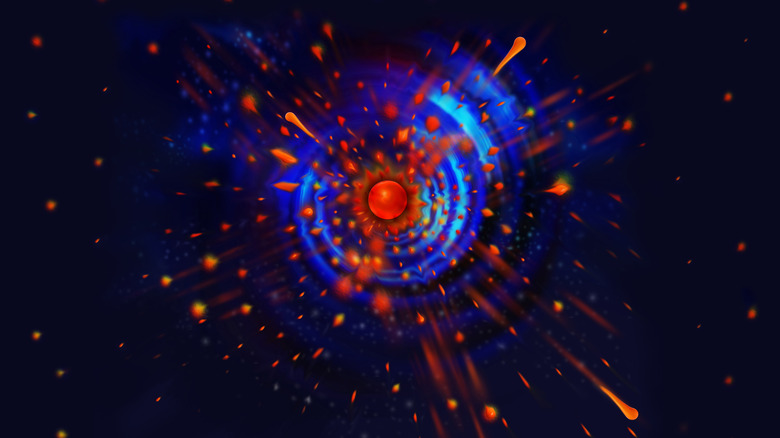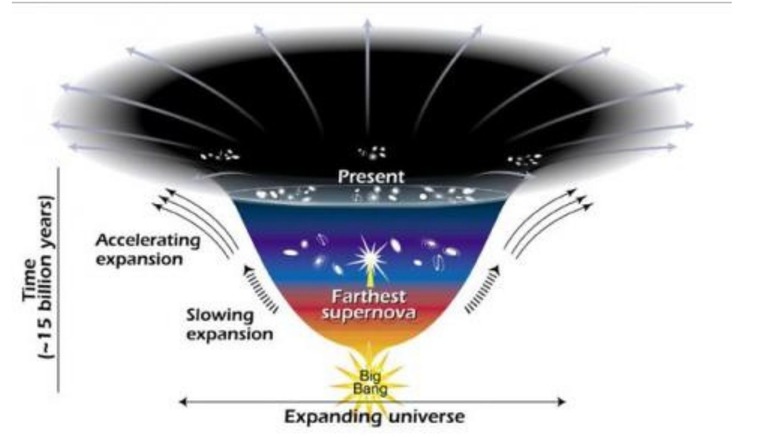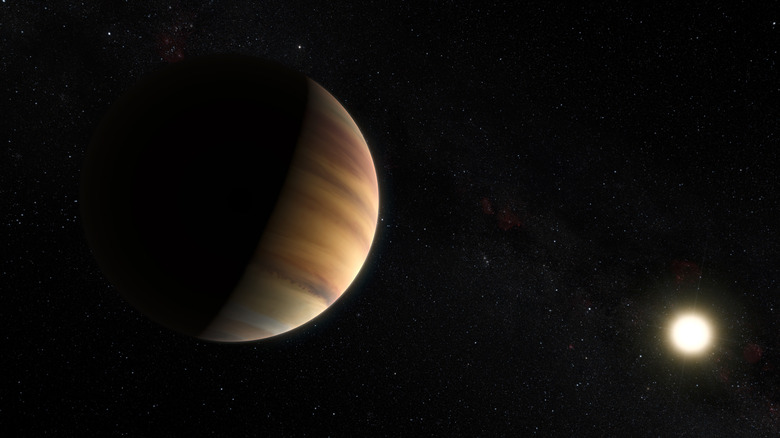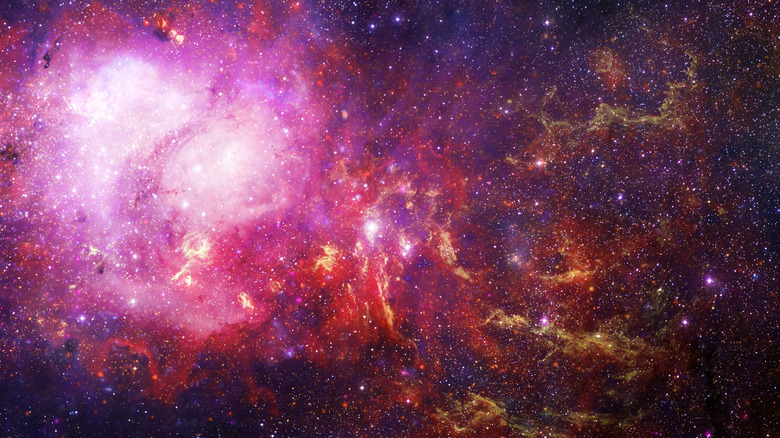10 Physics Experiments That Changed Our View Of the Universe
No one can question the impact of science on human civilization, and the importance of experimentation in science is equally undeniable. Some experiments confirm what we already know, others suggest a mechanism by which observed phenomena are driven.
For the latter type of experiment think of ancient Greek polymath Archimedes in the bathtub realizing that the displacement of water was directly related to the volume of an object placed in it, which legend suggests led to him running down the street naked yelling "Eureka!" — something we now know probably didn't happen.
Most scientific research is based on investigating "known unknowns" — scientists observe something, develop a hypothesis to be tested, and then design experiments to test this. But other experiments have a more profound effect on our understanding, suggesting things we had no idea about — the "unknown unknowns."
Throughout the history of science, there have been experiments in all the major disciplines that have delivered paradigm-shifting or even status quo-shattering results.
But when it comes to our understanding of the Universe arguably no field of science has delivered more results that fundamentally shifted our understanding of the universe than physics — encompassing astronomy, perhaps the earliest science, particle physics, nuclear physics, cosmology, and quantum mechanics. Some experiments are performed physically, while others are performed hypothetically in some of history's greatest minds.
These physics experiments fundamentally changed how we view the universe and our place within it.
The Earth moves from the center of the Universe
The idea that the Earth orbits the sun along with the rest of the planets may not seem particularly controversial, but the fact that we do not occupy a unique perspective or privileged position in the universe caused major waves in the 1600s when it finally began to gain traction.
Though the concept of a spherical Earth revolving around a "central fire" had planted the seeds of heliocentrism as early as the 5th Century BC via the musings of philosophers Philolaus and Hicetas, something extended upon by Aristarchus of Samos two centuries later, from the 2nd Century AD scientific thought had been dominated by the geocentric, or Earth-centered, theory of Claudius Ptolemy of Alexandria.
This would be the case for almost 1,400 years until the publication of Nicolaus Copernicus's De revolutionibus orbium coelestium libri VI or "Six Books Concerning the Revolutions of the Heavenly Orbs" in 1543, which put heliocentrism back on the table.
It was Italian natural philosopher, astronomer, and mathematician Galileo Galilei that would make the experimental steps that saw the so-called Copernican model of a sun-centric solar system eventually accepted as the accurate version of space at a local scale.
In 1610, using his telescope Galileo observed the planet Venus, discovering that it has phases just like the moon.
Galileo reasoned that these phases could only be explained by Venus going around the sun, upon occasion passing behind and beyond our star rather than revolving around the Earth.
The concept that the Earth was not the center of the cosmos would enrage the church which believed it contradicted scripture. This led to the inquisition process being brought against Galileo resulting in him being gagged against speaking on or writing about heliocentrism.
The nature of color: Netwon splits light
Though Sir Issac Newton's laws of motion and his contributions to the theory of gravity are widely regarded as his crowning achievements, the great passion of the author of Principia Mathematica was optics.
In the early 17th Century, when optics was growing as a field in physics with the development of instruments like the microscope, Newton decided to investigate the nature of light, in turn discovering how color arises.
The experiment devised by Newton to do this was devilishly simple. The physicist pushed a small pinhole through his blinds to allow a small beam of sunlight through. He found that when refracted by a prism this light changed into an oblong made up of different colors. Newton found that no matter the shape or size of the hole he cut and thus the shape of the beam of sunlight, the refracted light remains an oblong block of the same colors in the same order.
Even more surprisingly, he found that if he introduced a second black he could change the rainbow back into white light.
This showed white light from the sun was made of a miscellany of different colors. Delving deeper still, Newton found that red or blue light, when refracted by a prism, remained unchanged.
Perhaps the most important discovery this experiment yielded was the fact that the angle of the refraction of light depended on its color, the first hint that colors of light have their own frequency and wavelength.
To the heart of the atom: The Geiger-Marsden experiment
The concept of an atom — the point at which matter cannon longer be cut — dates back to the ancient Greeks, with the word itself derived from the Greek word "atomos" meaning "indivisible." Until 1897, scientists believed that atoms had no internal structure and were the smallest units of matter. That was before the discovery of a small negatively charged particle — the electron — by Joseph John Thomson.
In 1904, J.J Thomspon suggested that these particles were embedded in a positively charged substance much like fruit dispersed in plum pudding in his appropriately named plum-pudding model of the atom.
This model was overturned by the Geiger-Marsden experiment, also known as the gold foil experiment or the α-particle scattering experiments, pioneered by Ernest Rutherford and conducted by his protégés, Ernest Marsden and Hans Geiger.
Firing α-particles — which we now know are identical to a helium-4 nucleus — emitted by a radioactive source at a thin sheet of gold foil Rutherford reasoned that if the plum-pudding model of the atom was correct these traveling particles would experience the tiniest of deflections. This is due to the fact that an α-particle is about 7,000 times more massive than an electron.
The 1911 experiments showed that occasionally α-particles experienced a large deflection. While only one in 20,000 alpha particles had been deflected 45° or more this was enough to spark a major rethink of the atom and unveiled the presence of the atomic nucleus.
Rutherford compared the results to firing a 15-inch shell at a sheet of tissue paper and having it bounce back directly at you!
This revealed that the majority of the matter in an atom was concentrated at its center. Rutherford proposed a model of the atom with electrons orbiting a massive positively charged nucleus.
This model in time would be overturned, but it represented a vital step in discovering the proton and the neutron and unveiling atomic structure.
The Twin Paradox: Time is relative (so is space)
For Newton, the concept of space was fairly simple. A stage upon which the events of the Universe simply unfold. But, over the course of the first two decades of the 20th Century, Albert Einstein would shatter the notion of prosaic space, showing space itself to be a player in the events of the Universe, both directing the action and being influenced by other actors such as mass. This in itself would have been revolutionary, but Einstein didn't stop there, he showed time and space to be a single entity with the 4th dimension of time just as subject to change as space depending on the circumstance of the observer.
While Einstein became a master of the Gedankenexperiment — or thought experiment — to develop the theory of special and then general relativity, there is one thought experiment above all others that perhaps best exemplifies Einstein's groundbreaking approach to time, the so-called "twin paradox."
The twin paradox expresses the idea that "moving clocks run slow" and the concept of time dilation. It imagines twin sisters — Terra and Astra — the latter of whom blasts off from Earth in a rocket headed for a distant star system. Terra waits on Earth and from her reference frame, she will see Astra's moving clock running slow.
But, here's where the paradox element is introduced.
The paradox element
In Astra's reference frame, it isn't her clock that is moving, it's Terra's. That means she sees Terra's clock running slower than hers. So the question is, who is right? When the sisters meet up again upon Astra's return to Earth after many years, who is older?
The sisters discover that Terra has aged while Astra has retained her youth, and the reason for this is one of the key aspects of special relativity, it only applies to non-inertial reference frames — reference frames that don't accelerate. During Astra's trip through the cosmos, there are various times when she has to accelerate, which also includes changing directions.
The difference in age between Terra and Astra depends on factors such as her speed, how long she was away, and how many times she had to change speeds or directions.
The effect of time dilation is no longer restricted to thought experiments. Physicists have measured its effect on short-lived called Muons. When created by cosmic rays hitting the upper atmosphere these particles should exist for just 2.2 microseconds. Even when factoring in time dilation and the incredible velocity of muons–-0.98c or 98% the speed of light–-very few of these particles should survive long enough to strike the surface of our planet. But thanks to time-dilation, just like Astra retaining her youth, many of these particles do survive long enough to reach the surface of the planet.
What is light? The double-slit experiment
The splitting of light as it passed through a prism was the beginning of our investigation into this fundamental aspect of reality. For decades the argument raged amongst physicists as to whether light was a particle or wave. The double-slit experiment proved light is neither a particle, nor a wave, but has properties of both.
The double-slit experiment begins with monochromatic light — light of one wavelength and thus color — shining through two slits with a width separated by a distance similar to its wavelength.
As the wave passes through both slits, it splits into two new waves — just like water waves do as they encounter a rock. These two waves then interfere with each other, where a peak meets a trough, they will cancel each other out — so-called destructive interference. However, where a peak meets a peak the waves are reinforced — constructive interference — and the points with the brightest light.
On a second wall behind the screen, the light creates a stripy pattern, called an interference pattern. This demonstrates the wave nature of light, but there is more to this experiment.
If the light sent through the slits is reduced in intensity to one photon at a time, we see a particle-like distribution building on the screen. But, as the particles pile up, an interference pattern begins to build up like the photons are interfering with themselves.
This demonstrated that while a photon was detected as having the properties of a particle, interference unique to a wave appeared passing through the double-slit, thus revealing that the photon has properties of a particle and a wave.
Particle wave daulity in matter: The double-slit experiment part 2
Physicists weren't done with the double-slit experiment. It had already revealed the particle-wave duality of light, but researchers were determined to run the experiment with another particle, replacing light with electrons — tiny negatively charged fundamental particles of matter.
Using an electron gun to fire particles through the double-slit portion to a fluorescent screen or another type of particle detector, the electrons seem to appear randomly.
As more electrons come through the slits, an interference pattern — bands of dark "hits" and light misses — develops just as we see with the photons implying that the electrons are traveling just like photons do — like waves.
This interference pattern disappears if the experiment is run again, but this time with one of the slits closed, which leads to a pile-up of hits on the screen just like we would expect with bullets.
Re-rerunning the experiment with both slits open and the electrons dripping through one at a time we find that the interference pattern begins to emerge again. This implies that like the photons the electrons are interfering with themselves as they pass through the double slits.
The consequence of this is we were forced to abandon the classic idea of a particle possessing a single defined trajectory through space. The particle can be considered passing through each slit causing constructive and destructive interference. It also shows that matter — like light — exhibits particle-wave duality.
Quantum Entanglement: Investigating spooky action at a distance
Any scientific phenomenon that stunned Albert Einstein must be revolutionary. The concept of entanglement is the idea that two particles can be linked in such a way that changing one instantly changes the other. But, what troubled Einstein was the fact that this change would happen instantaneously even if the particles are at opposite ends of the Universe.
This challenges the ideas in physics of local realism — the concepts that the cause of a physical change must be local and that the properties of objects are real and exist in our physical universe independent of our minds. These challenges led Einstein to describe entanglement as "spooky action at a distance" and resulted in him spending the last years of his life devising thought experiments that would show the theory of quantum physics was incomplete with hidden variables explaining the nature of entanglement.
A physical experiment would finally validate the non-local nature of entanglement. In the 1960s physicist, John Bell devised a test called Bell's Inequality to hunt for hidden variables.
The aim was to test three assumptions; locality, realism, and freedom of choice — the idea that physicists can make measurements freely without the influence of hidden variables. Experiments to test Bell's Inequality have shown that when particles are entangled, the outcomes of measurements are more statistically correlated than would be expected in non-quantum systems described by classical physics.
Most physicists believe that entanglement violates either the first or second principle of Bell's Inequality. What is certain is that a change in an entangled particle causes an instantaneous change in its partner.
The cat, the box, and the poison
The rules of the subatomic world described by quantum physics are weird. Scientists would describe this as counterintuitive and perhaps one thought experiment above all others perfectly exemplifies this weirdness.
In quantum mechanics, the physics of the very small, possible states of a system is determined by wave functions that can overlap. This means that a quantum system modeled by waves can be described as existing in multiple states at one time — a superposition — with these states collapsing and taking a single value when measured or forced to interact with another system.
Part of what is known as the Copenhagen interpretation of quantum mechanics, Erwin Schrödinger wanted to show the flaws in this theory and inadvertently created one of the most talked-about thought experiments of all time — Schrödinger's cat.
Schrödinger suggested placing a cat in a box with a diabolical device — a vial of deadly poison that would break upon the decay of an atomic nucleus. Because the decay of an atom is a completely random process, there is no way of determining if this has happened without opening the box.
That meant that if we treat the box as a quantum system, Schrödinger's cat is in the ultimate superposition — being both dead and alive at the same time. The situation would only resolve upon the opening of the box when the wavefunction of the system collapses and the cat is found to be either dead or alive.
What is the Cosmic Microwave Background?
The cosmic microwave background (CMB) is radiation left over from an event shortly after the big bang called "the last scattering." This was the point, around 14 billion years ago, at which the Universe had cooled enough to allow electrons to join protons to form the first atoms.
As a consequence of this, photons were no longer endlessly scattered by free electrons and were suddenly permitted to freely travel the Universe. In other words, the Universe went from opaque to transparent. Radiation from this point should have a uniform temperature and some by spread through the Universe in a highly-uniform way.
Until 1965, Bob Dicke and his Princeton University team had been diligently searching for evidence of this "cosmic fossil" frozen into the Universe. But, unbeknownst to them, another team, just 50 or so miles away in New Jersey had already detected the CMB, they just didn't know it yet.
Astronomers Arno Penzias and Robert Wilson were having problems with the Holmdel Horn Antenna– a microwave radio telescope and satellite communication system–at Bell Labs. The duo was attempting to use the sensitive instrument to search for hydrogen in the Milky Way but they were picking up the same buzz from all areas of the sky. The duo attempted to rid themselves of this "background noise" several times trying to limit everything that occurred to them that could be the cause of this static.
Diving deeper
This involved eliminating badly insulated wires and even involved crawling into the horn-shaped antenna to remove what they described as "white dielectric material"–pigeon droppings to you and me–left by roosting birds. Penzias and Wilson finally determined that the signal was not coming from Earth. It was only when communicating with Dicke at Princeton that Penzias and Wilson realized what they had found. After a brief phone conversation with the Bell Labs team, Dicke's words to his team said it all: "Well, boys, we've been scooped."
Arno Penzias and Robert Wilson would share the 1978 Nobel Prize in Physics for their discovery of the CMB with Pyotr Leonidovich Kapitsa "for his basic inventions and discoveries in the area of low-temperature physics.
We now know the CMB fills the Universe with a uniform temperature of 2.7 K–less than three degrees above absolute zero, and at one point bits effects could be seen in every living room in the U.S. According to NASA, the CMB was "responsible for a sizeable amount of static on your television set–well, before the days of cable. Turn your television to an "in-between" channel, and part of the static you'll see is the afterglow of the big bang."
The CMB revealed conclusively that the Universe had undergone a period of rapid expansion in its early history confirming the Big Bang model of cosmology beyond doubt. But the expanding Universe was yet to deliver its greatest blow to our understanding of the cosmos.
What is dark energy? The Universe is expanding... and it's accelerating
At the beginning of the 20th Century, Edwin Hubble discovered from the observed relation between distance and recession velocity of galaxies that the universe is expanding.
Until 1929, and the publication of Hubble's short paper, "A relation between distance and radial velocity among extra-galactic nebulae," the common consensus in science was that the universe was static and unchanging. Albert Einstein had even added a factor called the cosmological constant — represented by the Greek letter Lambda — into his equations of the universe to ensure it remained static.
But, if this revelation was a surprise to the scientific community, the discovery in 1998 that this universal expansion is accelerating came as a complete shock. To see why this is, imagine giving a swing a push and then watching it gradually slow. As it is about to stop suddenly it begins to speed up again, accelerating despite no added force.
That's what the findings from astronomers that examined distant type Ia supernova — known as "standard candles" because of how their uniform light output makes them excellent distance measures — imply is happening with the Universe. Despite slowing after the initial rapid expansion of the Big Bang, the very fabric of space is again accelerating in its expansion.
This led to the introduction of "dark energy" as a placeholder for whatever force is driving this accelerating expansion. Independently confirmed since the initial supernova observations, NASA now estimates dark energy to account for 68 percent of the Universe's matter/energy content.
And the effect of dark energy is now described by the reintroduced cosmological constant — still represented by lambda — rescued from the science dustbin with a new purpose.
Infinite Worlds: Discovering exoplanets
For as long as humanity has known that the stars are bodies just like the sun we have wondered about the planets that could orbit these distant stellar bodies and if they could potentially harbor life just as Earth does.
Yet, despite astronomy's long history and its status as arguably the first science, the discovery of the first planet outside the solar system — an extrasolar planet or exoplanet — would take until the end of the 20th century.
Two major "firsts" in terms of exoplanet discoveries both occurred in the 1990s. In January 1992 astronomers Dale Frail and Aleksander Wolszczan announced the discovery of two rocky planets and a possible third orbiting a pulsar — PSR B1257+12 — located almost 2,000 light-years from Earth.
Pulsars are rapidly rotating neutron stars and blast out powerful radiation, meaning that the three planets around PSR B1257+12 could not possibly support life.
The discoveries will continue
In 1995, Michel Mayor and Didier Queloz discovered 51 Pegasi b — a so-called hot Jupiter exoplanet so close to its star that it has a scorching hot surface temperature of 1,000–1,800 degrees Fahrenheit and completes an orbit in just four days.
The duo, who shared the 2019 Nobel Prize in Physics for the discovery, located the planet using a detection method called the radial velocity technique. This measures the tiny wobble that an orbiting planet causes in its host star. The tiny movement causes a slight shift in the wavelength of light emitted by the star.
This makes light from the star redder if it is tugged away, or bluer if it is tugged towards Earth, which astronomers can use to infer the presence of a planet.
Since the discovery of the first exoplanet humanity hasn't looked back. NASA's exoplanet catalog now numbers over 4,800 confirmed worlds beyond the solar system — a testament to the power of detection methods that can pinpoint the tiniest of signals.
Of these, NASA says 927 planets have been discovered using the radial velocity method. This makes it the second most successful exoplanet detection method after the transit method — which measures tiny dips in light as a planet passes across the face of its star — which has been used to find 3854 exoplanets according to NASA.
With the event of the James Webb Space Telescope (JWST) the golden age of exoplanet science has truly begun.

